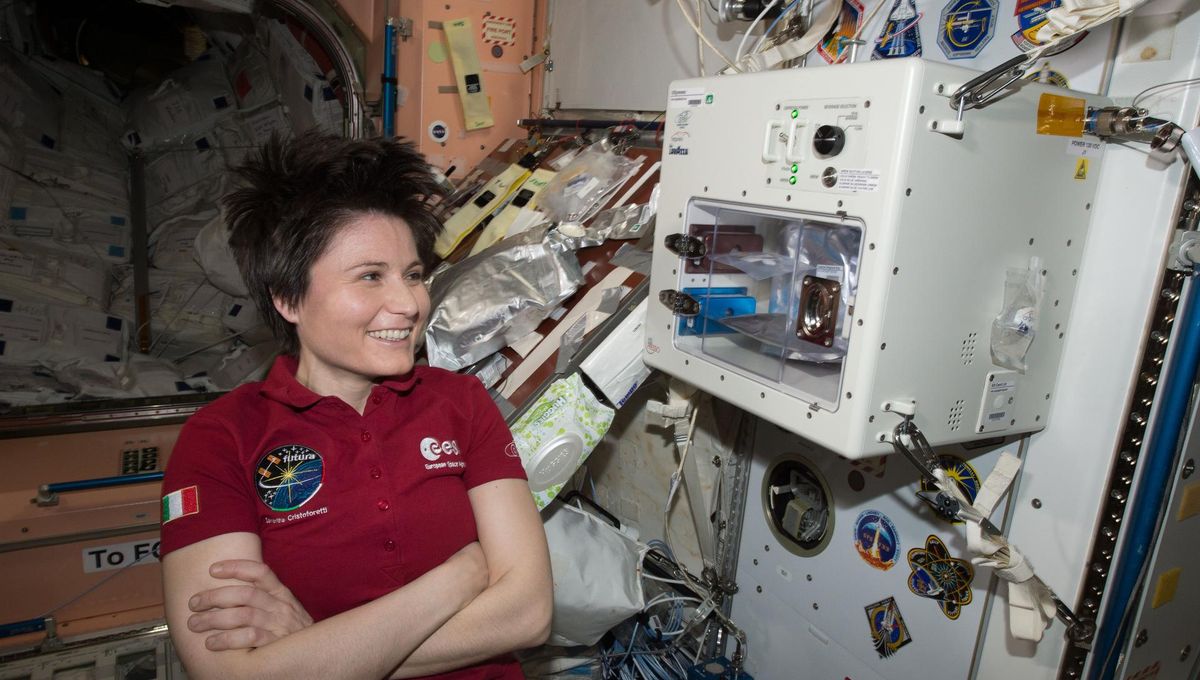
Italian astronaut Samantha Cristoforetti is on her way back down to Earth but in one of her last acts as commander of the International Space Station (ISS) and sci-comm extraordinaire, she revealed how astronauts drink coffee in space. It turns out microgravity creates a bit of a problem when you try to get the coffee out of a cup.
In a TikTok video, Cristoforetti demonstrates how trying to drink a nice cup of coffee “looks slightly different in space”. She first tries to drink the coffee out of a regular jar but without gravity, it is very difficult to get the liquid out. So she introduces us to the space cup.
The vessel has a peculiar snout that allows the coffee to flow to the edge, using capillary action, the movement of liquid due to adhesion (sticking to a surface), cohesion (sticking together), and surface tension – how a liquid tends to minimize its surface area.
NASA astronaut Donald Pettit designed the “capillary cup” on the ISS as he was tired of drinking water out of a bag. He made the first prototype using Mylar sheeting and Kapton tape. A second version was then designed by Mark Weislogel and his team at Portland State University made of 3D-printed food-grade plastic. That’s the one used by Cristoforetti. Pettit later designed a handmade ceramic one which is now on the ISS. Interestingly, that’s the first patented product invented in orbit, and you can buy it if you want to.
Cristoforetti and the rest of Crew-4 will land back on Earth tonight and hopefully, she’ll soon be able to enjoy a proper espresso and some rest after all the work – educational and scientific – she has carried out over the last six months in space. Crew-4 includes NASA astronauts Kjell Lindgren, Robert Hines, and Jessica Watkins. During this mission, Watkins became the first person to publish a scientific paper from space.
Source Link: Even Grabbing A Coffee In Space Requires Cool Tech, Astronaut Reveals